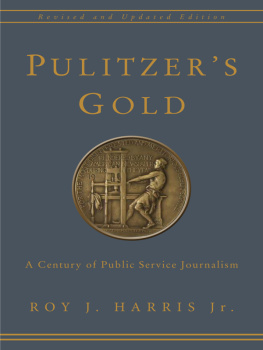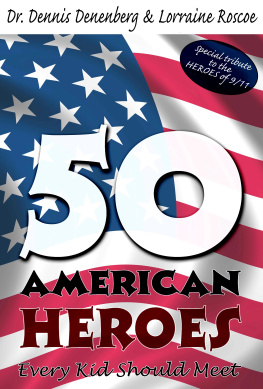
GARLAND STUDIES IN
AMERICAN POPULAR HISTORY AND CULTURE
edited by
JEROME NADELHAFT
UNIVERSITY OF MAINE
Garland Studies in American Popular History and Culture
Jerome Nadelhaft, series editor
Seduction, Prostitution, and Moral Reform in New York, 18301860
Larry Whiteaker
Hollywoods Vision of Team Sports: Heroes, Race, and Gender
Deborah V. Tudor
The Flamingo in the Garden: American Yard Art and the Vernacular Landscape
Colleen J. Sheehy
Textual Vehicles: The Automobile in American Literature
Roger N. Casey
Film and the Nuclear Age: Representing Cultural Anxiety
Toni A. Perrine
Lesbian and Gay Memphis: Building Communities Behind the Magnolia Curtain
Daneel Buring
Making Villains, Making Heroes: Joseph R. McCarthy, Martin Luther King, Jr., and the Politics of American Memory
Gary Daynes
America Under Construction: Boundaries and Identities in Popular Culture
Kristi S. Long and Matthew Nadelhaft, editors
AIDS, Social Change, and Theater: Performance as Protest
Cindy J. Kistenberg
African American Nationalist Literature of the 1960s: Pens of Fire
Sandra Hollin Flowers
The Rehabilitation of Richard Nixon: The Medias Effect on Collective Memory
Thomas J. Johnson
Chicano Images: Refiguring Ethnicity in Mainstream Film
Christine List
At a Theater or Drive-in Near You: The History, Culture, and Politics of the American Exploitation Film
Randall Clark
Lolita in Peyton Place: Highbrow, Lowbrow, and Middlebrow Novels of the 1950s
Ruth Wood
Contra Dance Choreography: A Reflection of Social Change
Mary Dart
The Intellectual Origins of Mass Parties and Mass Schools in the Jacksonian Era: Creating a Conformed Citizenry
Julie M. Walsh
Understanding Elvis: Southern Roots vs. Star Image
Susan M. Doll
Hollywoods Frontier Captives: Cultural Anxiety and the Captivity Plot in American Film
Barbara Mortimer
Public Lives, Private Virtues: Images of American Revolutionary War Heroes, 17821832
Christopher Harris
The Lyrics of Civility: Biblical Images and Popular Music Lyrics in American Culture
Kenneth G. Bielen
Published in 2000 by
Garland Publishing Inc.
A Member of the Taylor & Francis Group
19 Union Square West
New York, NY 10003
Copyright 2000 by author/editor
All rights reserved. No part of this book may be reprinted or reproduced or utilized in any form or by any electronic, mechanical, or other means, now known or hereafter invented, including photocopying and recording, or in any information storage or retrieval system, without permission in writing from the publishers.
10 9 8 7 6 5 4 3 2 1
Library of Congress Cataloging-in-Publication Data
Harris, Chistopher.
Public lives, private virtues : images of American Revolutionary War heroes, 17821832 / Christopher Harris.
p. cm. (Garland studies in American popular history and culture)
Includes bibliographcal references and index.
ISBN 0-8153-3482-6 (alk. paper)
1. United StatesHistoryRevolution, 17751783 Biography. 2. StatesmenUnited States Biography. 3. United StatesHistoryRevolution, 17751783Historiography. 4. StatesmenUnited StatesHistoriography. 5. Washington, George, 17321799. 6. Weems, M.L. (Mason Locke), 17591825. Life of George Washington. I. Title. II. Series.
E206.H27 1999
973.30922dc21 99-43611
To Christine
Biographers, magazine editors, and schoolbook authors of the early republic believed that written and visual portraits of American Revolutionary heroes could stimulate readers to act virtuously. Sympathetic identification with the wars heroes, who exemplified classical republican virtues, would engender in Americans those virtues thought necessary for the continued good health of the nation. But the notion of what constitutes virtuous behavior was changing during the fifty years following the Revolution. Eighteenth-century classical virtues required putting aside self interest for the communitys good. After the Revolution, Americans increasingly embraced self-interest, as suited a people increasingly concerned with economic growth, the accumulation of wealth, and the pursuit of social status.
The biographies, magazine articles, and schoolbooks examined in this book show little of this important change. There was near unanimous agreement among those who created portraits of the Revolutions war heroes that classical republican virtues matter, and matter deeply. Even bookseller and author Mason Locke Weems, whom historians have come to see as a prime example of emerging bourgeois values, promoted classical republican virtues. Although his colorful letters provide ample evidence of changing morality in America, his Life of Washington in its various versions sings the praises of the classical virtuesdisinterested benevolence, equanimity, temperance, piety, sincerity, and industry. To write his Life of Washington, Weems used the prevailing form of biography, recounting Washingtons public career and concluding with a list of the heros virtues. Weems modified the form in 1808 by adding stories of Washingtons private life. In 1812 he attempted something more radical, writing The Life of Gen. Francis Marion as a historical romance. Although Weems fell short of his goal, he created a book with touches of realism not found in other early national biographies.
Apart from George Washington and Francis Marion, the swamp fox, the heroes discussed in the pages that follow are likely to be unknown to most Americans. We have largely forgotten the writings of biographers, magazine writers, and schoolbook authors prominent during the years following the Revolution. Without the help of an emblem book, we can no longer read the visual language some illustrators used to create portraits of virtue, and the schoolbooks of the period are of interest primarily to historians and book collectors. Few Americans, however, would consider the concerns voiced in the biographies, magazines, and schoolbooks to be remote from their lives. Those who created portraits of Revolutionary heroes debated how private virtue influences public life, worried about declining standards of morality, and sought ways to teach values they believed to be crucial to the future of their children and the nation. The debate, worries, and efforts to teach values remain with us today.
Fifteen years have passed since I completed the first version of this book. At that time, I benefited greatly from the direction, support, and criticism of three scholars at Brown University. Barton St. Armand, who guided me through the vicissitudes of research and writing, was unwavering in his enthusiasm for this project. Gordon S. Wood provided keen advice about writing history. I have drawn extensively on his scholarship of the early republic to understand portraits of Revolutionary heroes. Thomas Adams, then Librarian of the John Carter Brown Library and now Librarian Emeritus, taught me the rewards of looking closely at a books paper, type, and binding, as well as the content of its text. Occupied with other endeavors for two decades, I was able to take a fresh look at my work when I picked it up again last year. I have changed much of its form and argument without the guidance of the three men who initially helped me so much. What faults the reader may find in












